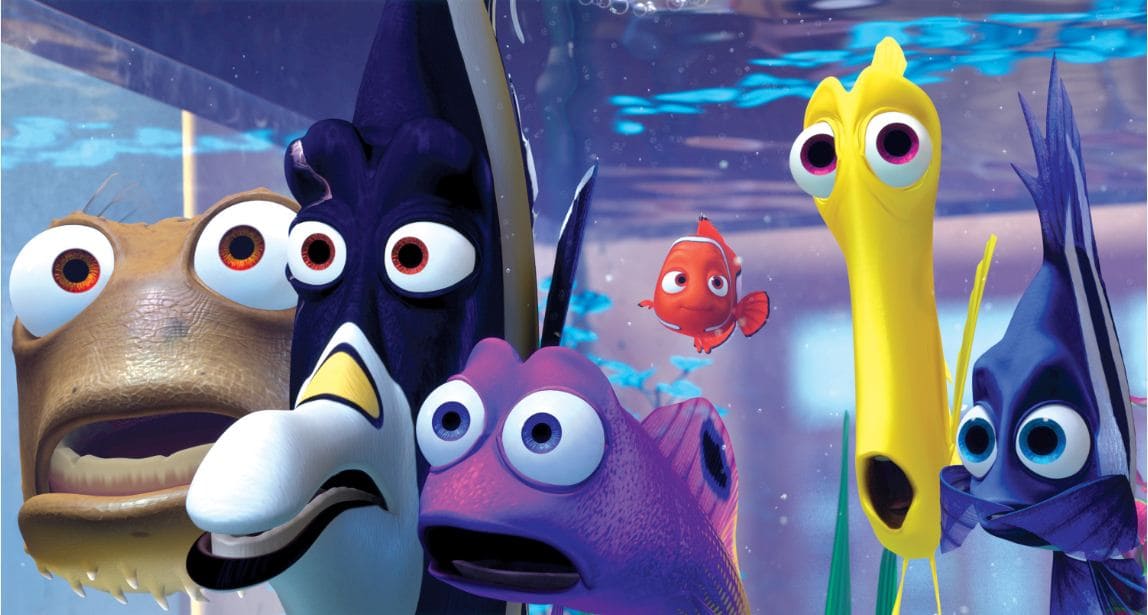Today, animation is not just for cartoons or movies, as it is present everywhere. From video games and websites to advertisements and educational videos, you will see this technology in every aspect. However, regarding the process, an animation of a computer that is used to create moving images is called digital animation. Unlike traditional hand-drawn sketches, these graphics allow artists to create smooth and realistic movements that bring creative ideas to life.
This technology has revolutionized the entertainment industry to produce high-quality animations faster. Thus, if you want to know more about this innovation, this guide has got you covered. The article will explain what digital animation is, how it works, and its different types. After that, you will learn about the main steps involved in both 2D and 3D animation while exploring an efficient cloud rendering platform.
Part 1. What is Digital Animation, and How Does It Work?
Digital animation is the art of generating motion visuals through specialized computer tools. It is different from traditional art as it uses special programs to draw and control characters and scenes. In this way, the work is done faster, and results are more flexible. With the help of computers, it is possible to create smoother movements and build 3D characters that look very real.
The way it works depends on the type of animation being created. As the first step of the process, the artists design characters and objects. Then, the software allows them to add movement and other special effects to make them interactive. For 3D animations, project models are built in a digital space, and light and textures are added. When everything is ready, the computer processes the animation and produces the final video.

Part 2. Types of Digital Animation
After learning what digital animation is in the previous section, you will learn about its various types in this part:
1. 2D Animation
This is the oldest and simplest form of digital animation, which works in two dimensions. The artists draw characters and scenes as flat images and then move them frame by frame to show action. Mostly, you will see such animations in cartoons and short educational clips. Since it requires fewer resources than 3D, it’s a great digital animation for beginners who want to get creative with limited tools.

2. 3D Animation
Apart from height and width, this animation uses a third dimension of depth to create more lifelike images. Programs like Blender and 3ds Max help the artists bring these scenes to life. You will see this digital art animation being widely used in movies, video games, and product designs. In addition, the characters are built like digital sculptures with bones and skin, and animators can move them like puppets.

3. Motion Graphics
A form of animation that focuses on moving graphic elements like shapes and symbols. This type of animation is powerful for catching attention and is created with the help of Final Cut Pro or Premiere Pro. This is the first digital animation that you should try if you are starting with animation for marketing or education. You may see them as moving bar graphs or animated text on TV commercials.

4. Rotoscoping
An animation technique where animators trace over real video footage, frame by frame, is called rotoscoping. Despite being time-consuming, this digital art animation allows the animators to create characters that move as though they are real people. With this, a real actor can be combined with a digital monster or background. Basically, it bridges the gap between live-action and animation, which makes them ideal for cartoons and films.

5. Stop Motion Animation
By taking pictures of real objects that are moved slightly between each photo, artists create this early computer animation. When these photos are played in a sequence, it looks like the objects are moving on their own. Basically, clever tricks by the camera and an eye for minute details combine to create stop-motion animation. Popular films like Wallace used this method as it creates a unique, handmade feel.

Part 3. Key Digital Animation Process for Beginners
After learning the types of computer animation in computer graphics, let’s look at how animation comes to life through the two main processes. Each type follows a series of steps that shape the story, and below is a simple breakdown of the steps involved in both animation styles:
2D Animation
- Storyboarding: This is the first step where the story is outlined scene by scene. Artists draw rough outlines to plan the flow and key moments, which act like a comic strip to guide the rest of the animation.
- Design: Different characters and the background are laid out in this phase of the animation. The design should be consistent, and the background adds to the depth of the scene.
- Animation: This can be called the heart of the whole process, which lets artists start creating the frames. Each frame is a progress from the previous one and gives the illusion of movement.
- Coloring & Effects: As the frames are ready, they are colored to bring the scene and characters to life. Visual effects like shadows or lighting are also added, which give a sense of emotion to the scene.
- Editing: The final step of this digital animation involves combining all the frames together, using editing software. Music and dialogue are added to match the visuals, and the video is polished for export.
3D Animation
- Modeling: An artist starts by building a 3D version of characters and objects with the help of digital tools. These models are created with the help of shapes and colors to make them look close to reality.
- Rigging: In this step, a digital skeleton is added to the models so they can move. As each model part is linked to joints and controls, rigging allows animators to bend and pose the characters.
- Animating: Animators set keyframes to define how and when objects or characters move in this step. The software fills in the motions, like walking between these points, to create smooth computer graphics and animation.
- Rendering: All animations are processed into a video of good quality, but it can take time for detailed animations. A computer calculates different kinds of effects and textures to create realistic scenes.
- Post Processing: This is the last step of the animation, where everything is rechecked, and effects are fine-tuned to make the model ready for sharing. The steps are rechecked, and any kind of mistake in the earlier steps is eradicated.
Pro Tip for 3D Animators: Improve 3D Animation Rendering Efficiency
When you have completed building a scene that has complex computer graphics and animation, its rendering will take a lot of time. The local computer will slow down, and the process may take days to complete. To tackle such situations, many animators take the help of cloud-rendering services like Fox Renderfarm. This is a world-leading platform that supports top 3D software like Maya and Cinema 4D.

The render farm service is perfect for studios and individuals as it offers flexible pricing and discounts for freelancers and students. As it has high availability, there is no need to wait in line, and your render will be done almost immediately without delays. Moreover, your work always remains protected as it offers a non-disclosure agreement that is there for users and is ISO27001 certified.
Key Features
- IT detection: The system is designed to automatically check the environment of your project. It can easily point out any kind of errors or missing assets so they can be corrected before rendering.
- Integration: For studios that want to streamline their workflow, they can connect their software directly via the platform’s APIs. This makes it easy to manage and track render jobs without leaving their preferred software.
- Rendering Options: This option lets you easily switch between rendering types according to the requirements of your project. Whether you need GPU rendering or CPU rendering, this platform allows both.
- Faster Uploads: It uses Raysync technology, which allows high-speed transmission for your project files. You can upload any files for rendering and download the rendered files without unnecessary waiting times.
- Storage: The platform is equipped with SSD drives that are powerful enough to store your files. It also removes slowdowns caused by traditional hard drives to let everything run smoothly.
Frequently Asked Questions
Q1. What are popular examples of digital animation?
Popular examples include the Toy Story movie series and The Simpsons show. Apart from this, many advertisements and social media videos also use motion graphics.
Q2. What's the difference between Computer Animation and CGI Animation?
The first term above covers all types of illustrations made with the help of a computer. Meanwhile, CGI is a specific kind that creates lifelike visuals, mainly used in films and games.
Q3. Can you learn digital animation yourself?
A lot of animators start their journey by studying online through courses on different platforms. Also, software such as Blender and Adobe Animate is ideal for beginners with regular practice.
Q4. Is digital animation a good career?
It is a growing field as it has a great scope in industries like movies and gaming. There is a huge demand for skilled animators are in demand, and freelancing opportunities are also available.
Conclusion
To sum up, the animation of a computer is of different types, which combine art and technology. An animator can choose between any 2D or 3D animation that comes with their distinct steps, which are discussed in this guide.
While creating these animations, rendering is a step that can put a burden on local computers. So, artists should use the cloud rendering services of Fox Renderfarm to smooth the rendering process.












